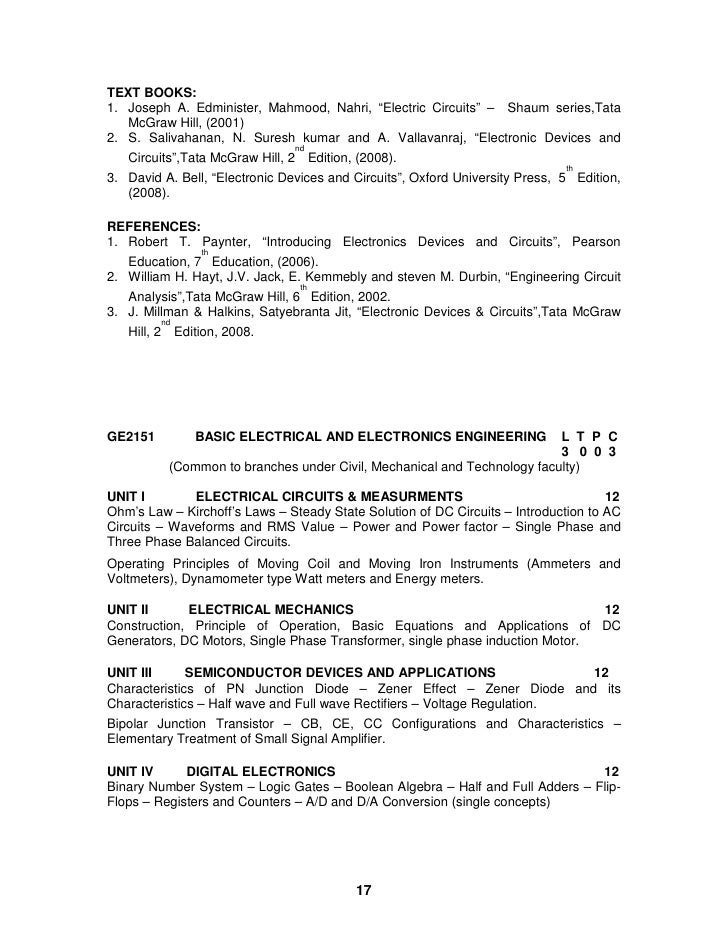
Robert Paynter Introductory Electronic Devices And Circuits.pdf Free Download Here Introductory electronic devices and circuits / Robert T. Introductory Electronic Devices and Circuits. Paynter, 013061761X, 613. Introductory Electronic Devices And Circuits By Robert T Paynter Pdf Free. Paynter Average rating 4.13 Convert PDF to any MS Office format and back again. Angkor is not the only world-renowned. - Robert T Paynter Pdf Converter. - Robert Glasper In My Element Rapidshare Downloads;.
Description &>Introduction to Electricity is written as a first text for students in electrical trade and electrical technology programs. The text assumes that the reader has no prior electrical training, and is written at a level that makes it readily accessible to all postsecondary students. From the start, Paynter and Boydell 's goal has been to produce a fundamentals book that students can really use in their studies. The chapters follow a logical progression that begins with fundamental topics such as safety, electrical and electronic career paths, and test equipment, followed by electrical properties, units of measure, fundamental electrical laws, DC compo- nents and circuits, residential electrical wiring, magnetism, AC components and cir- cuits, three-phase AC, transformers, generators and motors, alternators, power transmission and distribution, green power, and copper and fiber optic cabling. These topics prepare the reader for the courses that follow while providing a solid foundation for both traditional and emerging electrical career paths. Package with the and save! PERFORMANCE-BASED OBJECTIVES provide a handy overview of the chapter organization and a map to student learning.
KEY TERMS LISTS in the chapter openings identify new terms and the pages where they are introduced. This helps the student to quickly locate the discussion on each term listed.
MARGIN DEFINITIONS are provided in every chapter at the point where each new term is introduced. HIGHLIGHT BOXES are included in each chapter. In the Field boxes help bridge the gap between theory and practice. Staying Safe boxes provide important safety information. Key Concept boxes reinforce important points in many of the chapters. SUMMARY ILLUSTRATIONS provide a convenient description of circuit operating principles and applications.
Many also provide comparisons between related circuits. IN-CHAPTER PRACTICE PROBLEMS included in most examples provide students with an immediate opportunity to apply the principles and pro- cedures being demonstrated. The answers to these problems are provided on the last page of each chapter. IN-CHAPTER PROGRESS CHECKS end each section of the text, providing students with the opportunity to gauge their learning.
DETAILED CHAPTER SUMMARIES break the material in each chapter down into a bulleted list to provide an additional study aid. CHAPTER REVIEW questions at the end of each chapter provide the students with an opportunity to test their understanding of the material. PRACTICE PROBLEMS. An extensive set of practice problems is provided at the end of most chapters.
The answers to many of the practice problems are provided in Appendix D.
Paynter Introductory Electronic Devices and Circuits (EFV and CFV) 7th Edition Electronics Technology Fundamentals Electron Flow Version and Conventional Flow Version Second Edition This is the Companion Website for Electronics Technology Fundamentals (Electron Flow Version and Conventional Flow Version), Second Edition, by Robert T. Paynter and B.J.
Toby Boydell. It serves as an online study guide, allowing students to test their understanding of individual chapters with Multiple Choice and Fill-in-the-Blank quizzes that can be graded automatically for immediate feedback. Parallel To Serial Conversion Simulink Library. Other features specific to each chapter include Objectives, an Introduction, and a thorough Summary of key points to remember. Also included are many circuits from the CD that is included in the text (for users of Electronics Workbench Multisim ®:).